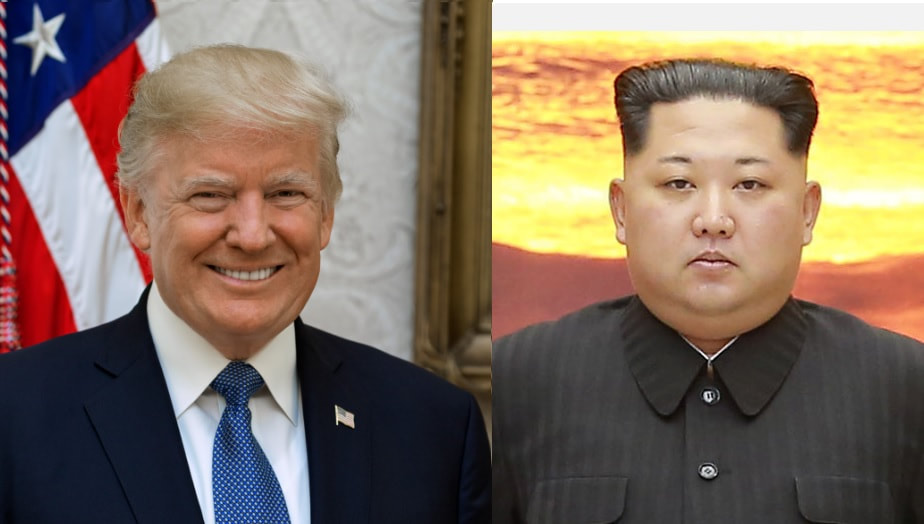|
By: G. Werner Kim John Un’s spontaneous willingness to demilitarise is in no way an act of good will or drive for peace. There is no apparent explanation as to the sudden and drastic change in the North Korean foreign policy to one of a pacifist state. The North’s nuclear and missile programme has been decades in the making, a demanding undertaking which required vast sways of monetary resources and a nation-wide effort. So why did the dictator choose to abruptly sway his diplomatic focus?
The most probable explanation are the signs of the mounting financial deficits which emerged as a direct consequence of the sanctions imposed by the international community upon the North Korean economy and trade. Additionally, another likely explanation is that the dictator most definitely understands the implications of perusing war with the South which is not only a formidable opponent but also has the strong allies and the United Nations support in the event of a war. Although welcomed with great support, the North’s newly adopted foreign policy plan is yet to be known. However, it is clear that in the short-term the notorious dictator Kim John Un has shown himself driven by his newfound interest in denuclearisation and diplomatic discussions. In the few months of this new year the Supreme Leader has spearheaded historic accomplishments whereby not only did the North-South relations improve drastically but surprisingly, the regime extended an invitation all the way to Washington welcoming the American President Donald Trump for talks. This unpredictable chain of events has unfolded in the span of a mere three months and has served a pivotal purpose in the de-escalation of international tensions. Who knows, maybe Kim John Un New Year resolution wasn’t that wicked after all. Last year marked an unprecedented escalation of global tensions as the North’s Supreme Leader unravelled before the bewildered nations of the world the full might of his missile programme in a sequence of tests which portrayed the advanced stage the North finds itself with regards to long-ranged weaponry. As the year unfolded a staggering total of 23 missiles were fired during the course of 16 tests. With these trials the young dictator finds himself amidst a grand total of 80 successful missile launches since he assumed the reins of the country back in 2011, a number significantly greater than both his predecessors combined. The underlying concern behind the Korean program was not the sheer volume of missiles but the variety of the arsenal at Kim’s disposal. From the short-ranged Hwasong-7 to the Hwasong-15 Intercontinental Ballistic Missile the Korean stockpile is truly well equipped and an indisputable threat. The ICBM, the pinnacle of Korean firepower, has a range of roughly 5,500Km which, when launched from within the Korean peninsula, could reach the American state of Alaska. However, if the launch were to take place from a submarine, the most option with most strategic value, the potential targets would be effectively limitless. Moreover, North Korea also holds two nuclear research facilities and a total of 8 missiles launch sites. Depicting how, in the event of a war, the nation has the potential to set in motion a devastating offensive. Following the previous trend regarding the monumental escalation of tension experienced last year we would have expected to observe continued missile testing and possibly the showcase of new models developed by Korea. However, Kim has once again startled the international community with an unforeseen and drastic shift in his foreign policy. It seems that the dictator has diverted his attention completely form the missile programme and goofing around with the American President and instead, directed his energy and resources towards the reduction of tensions in the Korean archipelago. The Pyeongchang Olympic games established the ideal scenario for Kim John Un to portray himself as a skilled diplomat and avid pacifist. These games marked a historic turning point due to the joint North and South Korean delegation in the opening ceremony under one united Korean flag, a rather utopic design which consisted of a blue image portraying a unified Korean peninsula on a white backdrop. What is most notable is the fact that the dictator did not conclude his efforts with this act but also allowed for a joint women’s hockey team to be assembled, sent his sister Kim Yo-Jong as the official ambassador representing North Korea, personally hosted a dinner with a delegation which was comprised of 10 members of the South Korean Government and most notably, marked the first step towards reopening dialogue with the US. Hence, the confirmation by the American President marks the first step towards what will be an extraordinary breakthrough in the peace talks between both Korea’s and possibly even act as the foundation upon which a hypothetical Korean re-unification may occur. Although the summit between Kin John Un and President Donald Trump shall pose a logistical, diplomatic and political challenge for all parties involved, both the sides alongside South Korea have been committed to ensuring the event can take place. However, we must not be fooled by the recent actions of Kim John Un. We cannot in any way discard the events which have unfolded in the previous year and the fact that Kim’s benevolence only emerged after significant escalation of tensions and the long-term sanctions which were imposed upon the country. It is of yet unclear if Kim’s intentions are truly to strive towards peace possibly denuclearisation or if this is yet another political game of cat and mouse with the United States and South Korea testing the boundaries of diplomacy. The result of joining these two unpredictable and powerful men during these talks is, to say the least, uncertain. We must now wait and see for ourselves the outcome of this historic summit and hope it points us towards a much-welcomed de-escalation of tensions in the Korean peninsula and internationally.
0 Comments
Leave a Reply. |
Categories
All
Archives
June 2024
|

